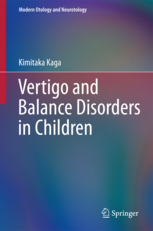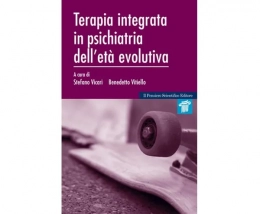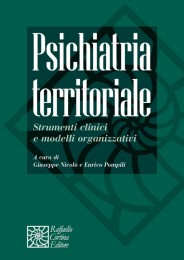Non ci sono recensioni
- Covers key topics in pediatric vestibular failures from the mechanism to clinical treatments
- Describes in detail the clinical applications of the VEMP (vestibular evoked myogenic potential), Caloric Test and Rotation Chair method for an in-depth understanding of the evaluation of vestibular disorders
- Addresses the needs of those working in various fields of such as pediatric otolaryngology, audiology, neurology, neonatology and rehabilitation
Contents
1 Introduction: History ................................................................................ 1
1.1 Pioneers of Postural Refl ex Studies ................................................... 1
1.2 History of Vestibular Function and Postural Refl ex Research ........... 2
References ................................................................................................... 8
2 The Basis of Vertigo and Balance Disorders in Children ...................... 9
2.1 Anatomical Development of the Vestibular Organ
and Vestibular Nervous System ......................................................... 9
2.1.1 Development of Vestibular Semicircular Canals
and Myelination of the Vestibular Nervous System ............... 9
2.1.2 Development of the Vestibular/Motor Nervous System ........ 10
2.2 Motor Development of Healthy Infants and Children ....................... 12
2.2.1 Newborns and Infants ............................................................ 12
2.2.2 Childhood ............................................................................... 12
2.3 Development of the Righting Refl ex and Examination Methods ...... 13
2.3.1 Group I: 0–4 Months .............................................................. 14
2.3.2 Group II: 4–6 Months ............................................................ 14
2.3.3 Group III: 6–48 Months ......................................................... 14
2.3.4 Group IV: 4 Years of Age to Adults ....................................... 16
2.4 Role of Labyrinthine Muscle Tone .................................................... 16
2.4.1 Unilateral Labyrinth Destruction of Pigeons, Frogs,
and Cats and Changes in Muscle Tone .................................. 18
2.4.2 Bilateral Labyrinth Destruction and Changes
in Muscle Tone ....................................................................... 19
2.5 Labyrinthine Sense Disorder and Neurological Signs ....................... 19
2.6 Development of the Vestibulo-Ocular Refl ex
and Examination Methods ................................................................. 20
2.6.1 Damped Rotational Chair Tests ............................................. 20
2.6.2 Caloric Nystagmus Test ......................................................... 22
2.7 Examination of Total Locus Length by Stabilograph ........................ 22
References ................................................................................................... 25
3 Disequilibrium: Abnormal Posture Control ........................................... 27
3.1 Pathophysiology of Postural Control ............................................... 27
3.2 Congenital Disequilibrium ............................................................... 28
3.2.1 Balance Disorder due to Congenital Bilateral Loss
of Labyrinthine Function ..................................................... 28
3.3 Acquired Abnormality of Balance Function
and Motor Development .................................................................. 35
3.3.1 Effect of Bilateral Loss of Labyrinthine Function
in Newborns and Infants ...................................................... 37
3.3.2 Effect of Bilateral Loss of Labyrinthine
Function in Childhood ......................................................... 37
3.4 Bilateral Loss of Labyrinthine Function
After School Age ............................................................................. 38
3.5 Unilateral Labyrinthine Disorder ..................................................... 38
3.6 Complications of Visual and Labyrinthine Disorders
and Development of Balance ........................................................... 39
3.6.1 Delay in Motor Function due to Visual
Disturbance Alone ............................................................... 39
3.6.2 Vision and the Cerebellum ................................................... 39
3.6.3 Visual Space Perception and Behavior of Children
with Severe Amblyopia ........................................................ 40
3.6.4 Infl uence of Blindness on Congenital
Vestibular Failure ................................................................. 40
3.7 Brain Tumor of the Posterior Cranial Fossa .................................... 42
3.8 Cerebellar Disorders ........................................................................ 44
3.9 Brain Anomaly: Cerebellar Hypoplasia ........................................... 44
3.9.1 Hypoplasia or Defect of the Cerebellar
Vermis/Hemispheres ............................................................ 45
3.9.2 Arnold-Chiari Malformation ................................................ 46
3.9.3 Dandy-Walker Syndrome ..................................................... 48
3.10 Congenital Oculomotor Apraxia [20] .............................................. 48
3.11 Benign Paroxysmal Torticollis ......................................................... 50
3.11.1 Defi nition of Benign Paroxysmal Torticollis ..................... 50
References ................................................................................................... 53
4 Vertigo in Children ................................................................................... 55
4.1 Perception of Vertigo ......................................................................... 55
4.2 “Vertigo” as Abnormal Perception ..................................................... 56
4.2.1 Vertigo Due To Inner Ear Disorders ...................................... 56
4.2.2 Central Vertigo ....................................................................... 56
4.2.3 Orthostatic Dysregulation ...................................................... 57
4.2.4 Jaw Arthrosis ......................................................................... 57
4.2.5 Psychogenic: School Refusal ................................................. 57
4.3 Cochlear Implantation and Vestibular Problems ................................ 58
4.3.1 Vestibular Nystagmus After Cochlear
Implantation in Adults ........................................................... 58
4.3.2 Head Tilt to the Side of Cochlear Implantation ..................... 58
4.3.3 Cochlear Implants and VEMP ............................................... 60
4.3.4 VEMP Evoked by Multichannel Cochlear Implant:
Infl uence of C Levels ............................................................. 61
References ................................................................................................... 62
5 Rehabilitation of Children with Disequilibrium .................................... 63
5.1 Mechanism of Compensation and Adaptation
in Disequilibrium ............................................................................... 63
5.2 Labyrinthine Disorder and Actual Rehabilitation .............................. 65
5.2.1 Training of Equilibrium Function in Healthy Children ......... 66
5.2.2 Training of Equilibrium Function in Children
with a Labyrinthine Disorder ................................................. 66
5.2.3 Sensory Integration Training by Vestibular Stimulation
in Children with a Learning Disability .................................. 67
References ................................................................................................... 68
6 Inner Ear Anomalies and Vestibular-Evoked Myogenic
Potentials (VEMP) .................................................................................... 69
6.1 VEMP in Patients with Inner Ear Anomalies .................................... 69
6.2 VEMP of Children with Inner Ear Malformation Before
and After Cochlear Implantation ....................................................... 73
References ................................................................................................... 77
7 Gene Mutation in Congenital Deafness and Vestibular Failure ........... 79
7.1 Gene Mutation of Vestibular Failure .................................................. 79
7.2 GJB2 Gene Mutation ......................................................................... 79
7.3 SLC26A4/PDS Gene Mutation ........................................................... 80
7.4 Mitochondria Gene Mutation ............................................................ 81
7.5 OTOF Gene Mutation in Auditory Neuropathy ................................. 81
7.6 Gene Mutation in Vestibular Labyrinth ............................................. 82
References ................................................................................................... 83
Index ................................................................................................................. 85




